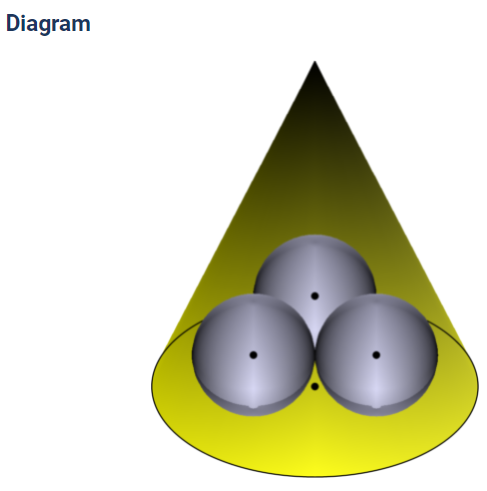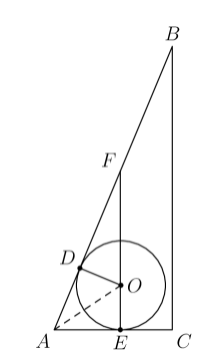2021 AMC 10 A Fall
Complete problem set with solutions and individual problem pages
Inside a right circular cone with base radius and height are three congruent spheres with radius . Each sphere is tangent to the other two spheres and also tangent to the base and side of the cone. What is ?(2021 AMC Fall 10A, Question #22)
- A.
- B.
- C.
- D.
- E.
Solution 1:

Notice that we chose a cross section where one of the spheres was tangent to the lateral surface of the cone at . To evaluate , we will find and in terms of ; we also know that , so with this, we can solve . Firstly, to find , we can take a bird's eye view of the cone:
Note that is the centroid of equilateral triangle . Also, since all of the medians of an equilateral triangle are also altitudes, we want to find two-thirds of the altitude from to ; this is because medians cut each other into a to ratio. This equilateral triangle has a side length of , therefore it has an altitude of length ; two thirds of this is , so

To evaluate in terms of , we will extend past point to at point is similar to . Also, is the angle bisector of . Therefore, by the angle bisector theorem, . Also, , so , so . This means that We have that and that , so . We also were given that . Therefore, we have This is a simple linear equation in terms of . We can solve for to get
Solution 2:
We will use coordinates. WLOG, let the coordinates of the center of the base of the cone be the origin. Then, let the center of one of the spheres be . Note that the distance between this point and the plane given by is . Thus, by the point-to-plane distance formula, we have Solving for yields (B)
